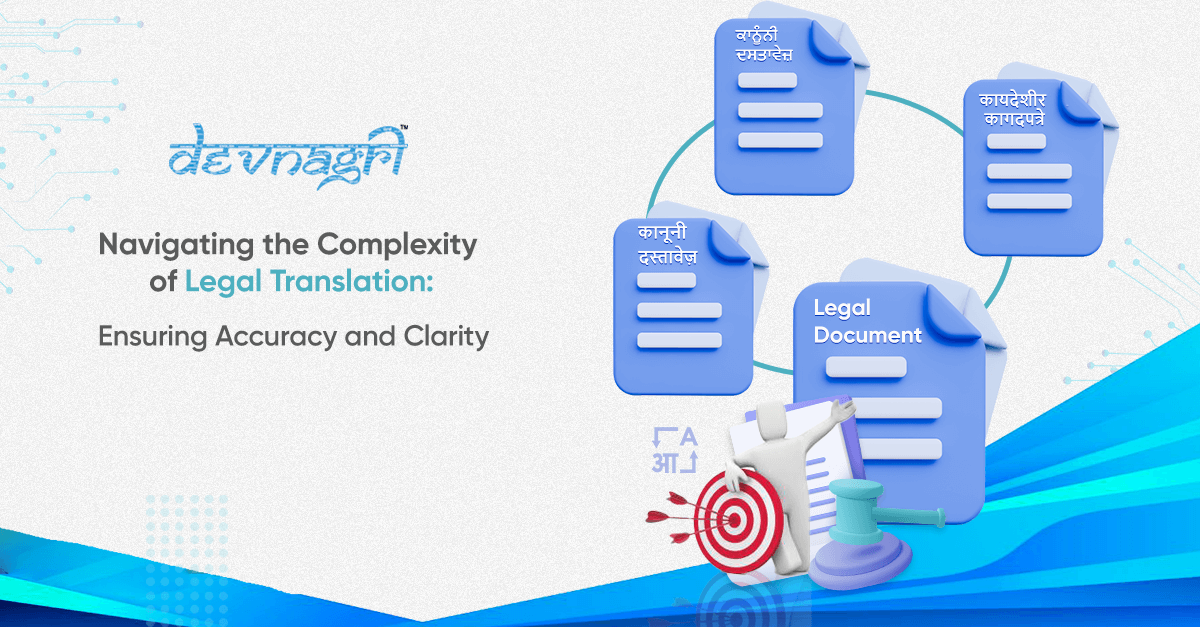
In our increasingly globalized world, where businesses expand across borders and individuals relocate for various reasons, the need for effective communication across languages has never been more crucial. Particularly in the legal realm, where precision and clarity are paramount, the role of legal translation becomes indispensable. Legal translation involves the conversion of legal documents, contracts, court transcripts, and other materials from one language to another while maintaining their legal accuracy and integrity. In this blog post, we delve into the intricacies of legal translation, its challenges, and best practices to ensure accuracy and clarity in every translated document.
Also Read: Bridging Cultures: The Importance of English to Tamil Translation
Understanding the Complexity
Legal translation is a specialized field that demands a deep understanding of both legal terminology and the nuances of different legal systems. Unlike general translation, where the focus is primarily on conveying meaning, legal translation requires adherence to specific legal principles, cultural sensitivities, and jurisdictional differences.
One of the fundamental challenges of legal translation lies in the inherent differences between legal systems across countries and regions. Legal concepts that are straightforward in one jurisdiction may not have direct equivalents in another. For instance, the common law system, primarily practiced in countries like the United States and the United Kingdom, differs significantly from civil law systems prevalent in many European countries.
Moreover, legal documents often contain complex language, archaic terms, and statutory references, making them particularly challenging to translate accurately. The slightest error or ambiguity in translation could have far-reaching legal consequences, leading to misunderstandings, disputes, or even legal liabilities.
Also Read: Breaking Language Barriers: The Power of a Website Translator
Ensuring Accuracy and Clarity
Given the critical nature of legal translation, translators must employ various strategies to ensure accuracy and clarity in their work:
- Specialization: Legal translation requires specialized knowledge and expertise. Translators should have a background in law or extensive experience in legal translation to navigate the complexities of legal terminology and concepts effectively.
- Research: Thorough research is essential to understand the legal context of the document being translated. Translators must familiarize themselves with relevant laws, regulations, and legal precedents to ensure accurate translation.
- Glossaries and Databases: Creating and maintaining glossaries of legal terms and phrases can streamline the translation process and maintain consistency across documents. Access to reputable legal databases and resources can also aid in verifying terminology and references.
- Attention to Detail: Legal translation demands meticulous attention to detail. Translators must carefully analyze each word and phrase to capture the precise meaning intended in the source language.
- Cultural Sensitivity: Cultural nuances play a significant role in legal communication. Translators must be sensitive to cultural differences and adapt their translations accordingly to ensure clarity and avoid misunderstandings.
- Collaboration and Review: Collaborating with legal experts and seeking feedback from peers can enhance the quality of legal translations. Multiple rounds of review and proofreading are essential to identify and rectify any errors or inconsistencies.
Also Read: Exploring the Nuances of English to Hindi Translation: Bridging Cultural and Linguistic Divides
Challenges and Pitfalls
Despite the best efforts of translators, several challenges and pitfalls may arise in the process of legal translation:
- Linguistic Ambiguity: Legal documents often contain ambiguous or vague language, which can be challenging to translate accurately without proper context.
- Legal Gaps: As mentioned earlier, not all legal concepts have direct equivalents in other languages or legal systems, leading to gaps or discrepancies in translation.
- Time Constraints: Legal translation projects may have tight deadlines, increasing the pressure on translators to deliver accurate translations within limited timeframes.
- Confidentiality and Security: Legal documents often contain sensitive information that must be handled with utmost confidentiality and security during the translation process.
Also Read: Navigating the Complexities of Finance Translation: Bridging Language Gaps for Global Success
Conclusion
Legal translation is a complex and demanding task that requires specialized knowledge, attention to detail, and a deep understanding of legal principles. By employing best practices, such as specialization, thorough research, and collaboration, translators can ensure accuracy and clarity in legal translations, mitigating the risks of misunderstandings or legal discrepancies.
In our interconnected world, where legal transactions and interactions transcend linguistic and cultural boundaries, the importance of reliable legal translation solutions cannot be overstated. By bridging language gaps and facilitating cross-border communication, legal translators play a crucial role in upholding the integrity and effectiveness of the legal system on a global scale.





